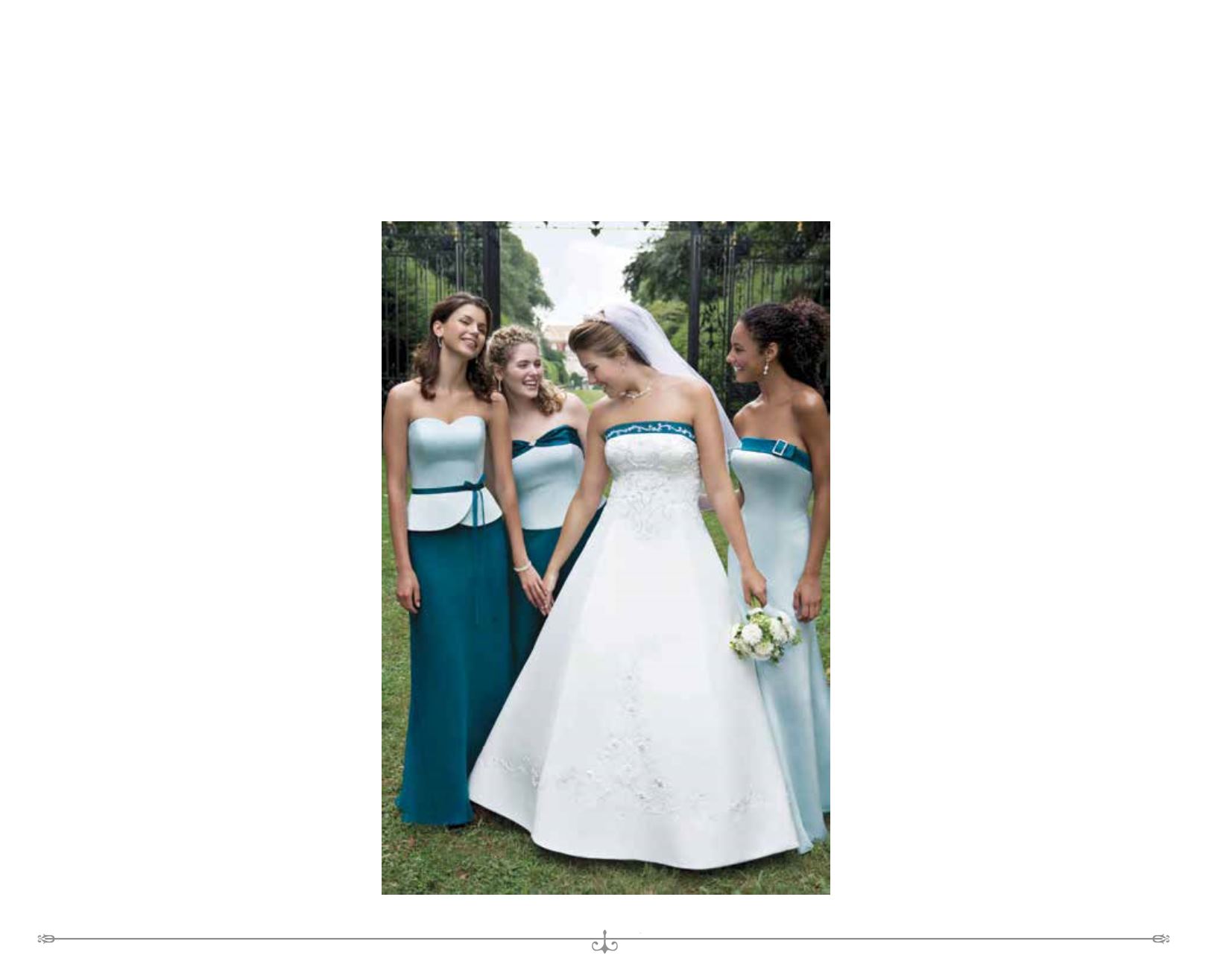

C H I C A G O W E D D I N G & P A R T Y R E S O U R C E
W W W . C H I C A G O W E D D I N G R E S O U R C E . C O M
62
Updated classics tip their ‘haute’ in honor of Audrey Hepburn
and Jackie O., with delicate ornamentation, contoured fabrics
and the return of ball gowns. Welcome back, sophistication.
By Robert Sharoff
Something old, something new, goes the old saying
about bridal ensembles. Designers generally have no
problem with the first half of that equation. Bridal
dresses by their very nature tend to be steeped in
tradition and historicism. The second part, however,
the “something new” part, can be more of a challenge.
As modern as today’s girl is, when it comes time for
her wedding day – even if she has a tattoo and a belly
ring – she usually wants to look like a classic bride.
She doesn’t want to look trendy.
Bridal dresses aren’t disposable. You don’t want a
dress that is so out there that it’s going to look weird
when you see the pictures 20 years from now.
For the last half dozen years, modern has meant
minimal. All the embellishments one traditionally
associates with brides and weddings, such as beads,
lace and embroidery, were either missing in action or
present in limited ways.
The positive side of this is that factors such as draping
and construction became much more important in
bridal fashions. Bridal dresses today are often better
constructed than they were 10 and 20 years ago
because details that used to be covered up by beads
and lace – such as seams and darts – are in plain view.
The negative side of minimalism, however, is that the
lack of embellishment finally became monotonous.
Beads, lace and other furbelows give a dress
distinction and romance. And no one wants to blend
into the background on her wedding day. It’s the one
day you don’t have to be practical.
Bridal dresses are fantasy garments. We’re talking
about the most expensive gown most girls will ever
buy for what is conceivably the most important
occasion of their lives. It has to be special.
Modern today means timelessness, luxury and
glamour. It’s ladylike, romantic and feminine. When
people think classic, they think of icons such as
Audrey Hepburn, Grace Kelly and Jackie Kennedy.
It’s a look that doesn’t date. It was right then, it’s right
now and it will be right a hundred years from now.
Modern also means sexy, but within acceptable limits.
There’s nothing wrong with a dress that accentuates
a woman’s beauty and sensuality by following the
lines of her body. You certainly don’t want to look
androgynous on your wedding day.
This new frankness has a lot to do with changes in
brides over the last generation. Ten years ago, brides
all wanted to look like their mothers. Today, they
have a lot more self-confidence. They have their own
sense of style and
come in with binders of information now. They
definitely know how to use the Internet.
Along with the return to ornament, designers also say
silhouettes are undergoing a significant change.
The whole narrow A-line silhouette is slowly going
away. In its place are larger dresses. Dresses are
getting bigger and bigger. The ball gown is going to
make a big splash over the next few seasons. The
challenge is to update them in an intelligent way with
ornament and innovative draping.
Along with the resurgence of larger dresses is a trend
away from strapless styles. Make no mistake: strapless
still dominates the market for the simple reason that
it’s a very flattering look on a variety of body shapes.
Still, alternatives are creeping back into the market,
like spaghetti straps and V-necklines. Beads, crystals
and intricate embroidery are, of course, mainstays of
the bridal industry. The key, however, is placement.
F A S H I O N S , J E W E L R Y , A C C E S S O R I E S F O R M E N & W O M E N
My Fair Lady









